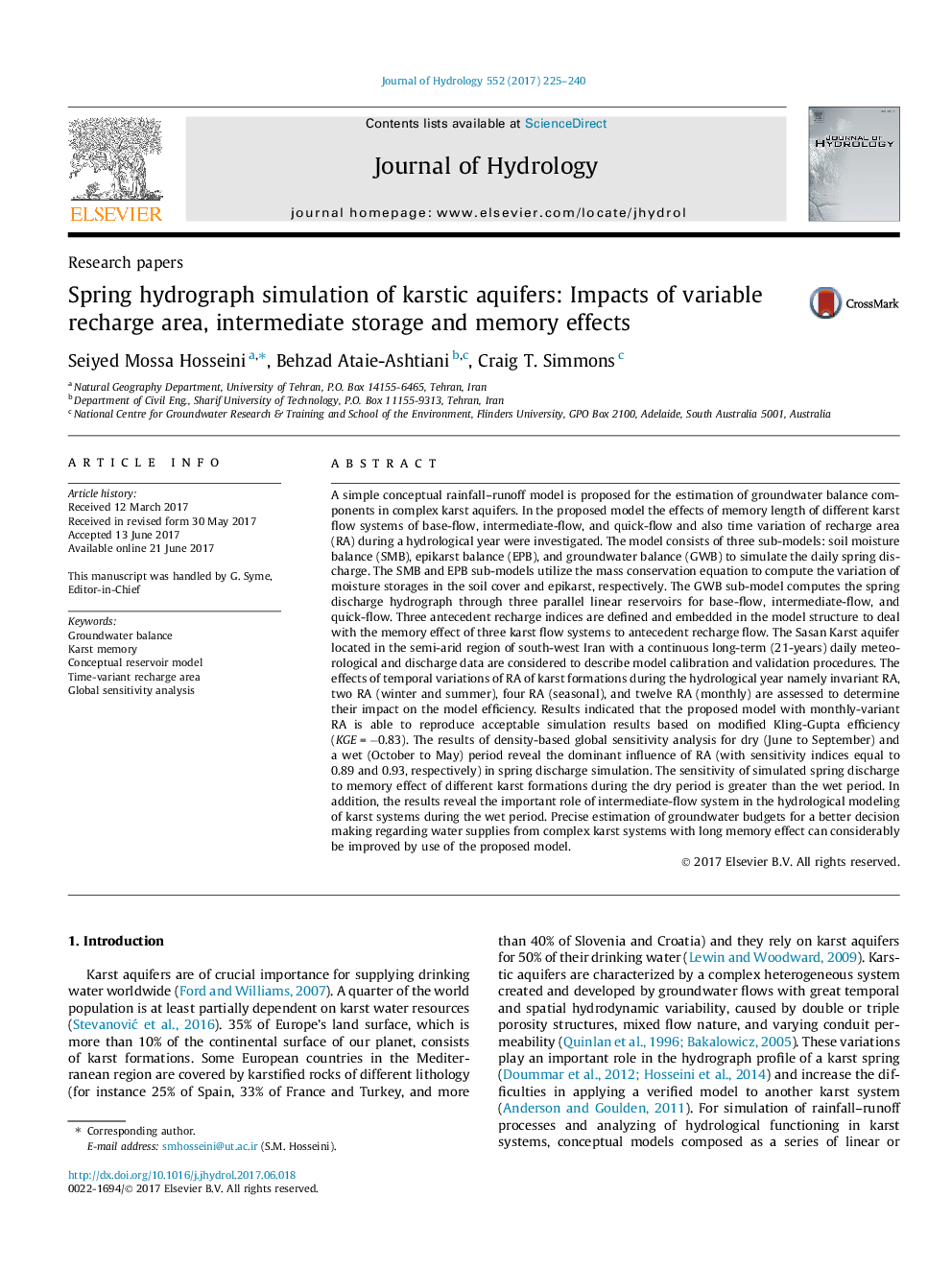| Article ID | Journal | Published Year | Pages | File Type |
|---|---|---|---|---|
| 5771156 | Journal of Hydrology | 2017 | 16 Pages |
â¢Incorporating the residence time in groundwater balance model of karst aquifer.â¢Temporal variations of karst recharge area are assessed on model efficiency.â¢Recharge area of karst formations is the most sensitive parameter in the model.â¢Intermediate flow has influential role in hydrological modeling of karst systems.
A simple conceptual rainfall-runoff model is proposed for the estimation of groundwater balance components in complex karst aquifers. In the proposed model the effects of memory length of different karst flow systems of base-flow, intermediate-flow, and quick-flow and also time variation of recharge area (RA) during a hydrological year were investigated. The model consists of three sub-models: soil moisture balance (SMB), epikarst balance (EPB), and groundwater balance (GWB) to simulate the daily spring discharge. The SMB and EPB sub-models utilize the mass conservation equation to compute the variation of moisture storages in the soil cover and epikarst, respectively. The GWB sub-model computes the spring discharge hydrograph through three parallel linear reservoirs for base-flow, intermediate-flow, and quick-flow. Three antecedent recharge indices are defined and embedded in the model structure to deal with the memory effect of three karst flow systems to antecedent recharge flow. The Sasan Karst aquifer located in the semi-arid region of south-west Iran with a continuous long-term (21-years) daily meteorological and discharge data are considered to describe model calibration and validation procedures. The effects of temporal variations of RA of karst formations during the hydrological year namely invariant RA, two RA (winter and summer), four RA (seasonal), and twelve RA (monthly) are assessed to determine their impact on the model efficiency. Results indicated that the proposed model with monthly-variant RA is able to reproduce acceptable simulation results based on modified Kling-Gupta efficiency (KGEÂ =Â â0.83). The results of density-based global sensitivity analysis for dry (June to September) and a wet (October to May) period reveal the dominant influence of RA (with sensitivity indices equal to 0.89 and 0.93, respectively) in spring discharge simulation. The sensitivity of simulated spring discharge to memory effect of different karst formations during the dry period is greater than the wet period. In addition, the results reveal the important role of intermediate-flow system in the hydrological modeling of karst systems during the wet period. Precise estimation of groundwater budgets for a better decision making regarding water supplies from complex karst systems with long memory effect can considerably be improved by use of the proposed model.
